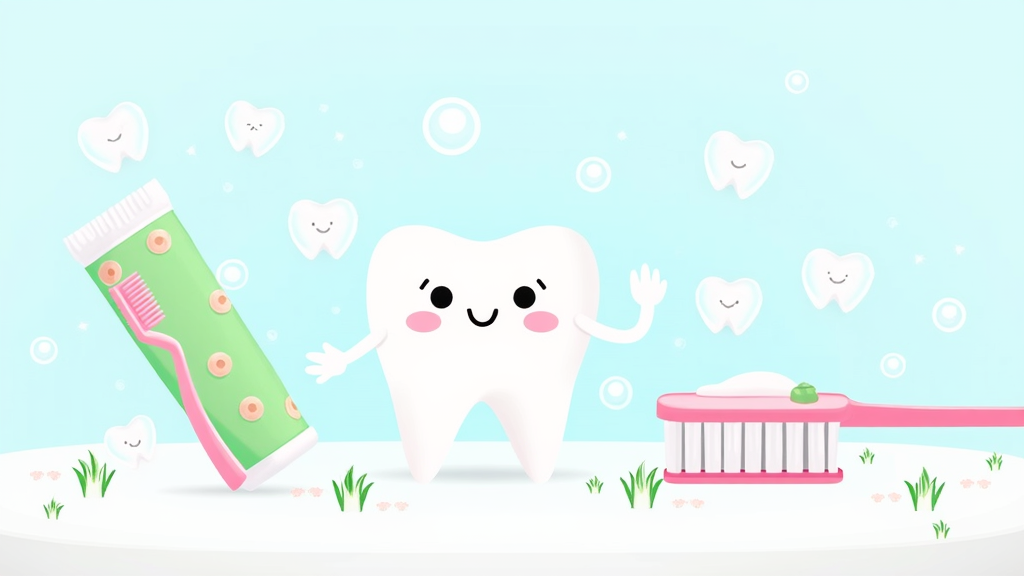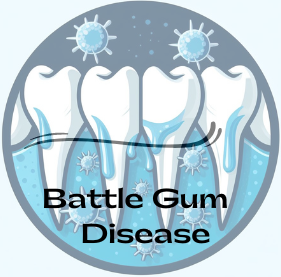
Oral health often slips through the cracks with kids until obvious problems show up, but catching dental issues early means less pain, a happier smile, and a smaller bill at the dentist down the line. I’ve met plenty of parents who were surprised by how much can happen with a child’s oral health, even before any adult teeth appear. Being aware and knowing what signals to watch for goes a long way in catching problems before they have a snowball effect.
Why Oral Health in Children Matters
Solid oral health does more than keep kids’ smiles bright. It plays a role in chewing food, speaking clearly, and even expressing their confidence at school or around friends. Bad dental health can quickly lead to infections and tooth pain, affecting their eating and sleeping activities. The Centers for Disease Control and Prevention (CDC) says tooth decay is one of the most common chronic diseases in kids, far more widespread than most parents realize. Routine brushing, regular dental visits, and a balanced diet all lay the groundwork for healthy, lifelong habits.
Understanding the Most Common Oral Health Problems in Children
Kids can’t dodge dental problems just because their baby teeth fall out eventually. Taking care of these early issues prevents small troubles from turning into big ones when adult teeth come in. Here are six common problems parents should be aware of and what you can do for each:
- Tooth Decay (Cavities): The top oral health problem facing children
- Gum Disease (Gingivitis): Early gum swelling from plaque
- Tooth Sensitivity: Pain or discomfort with hot, cold, or sweet foods
- Thumb Sucking and Pacifier Use: Habits that might affect the teeth alignment
- Dental Trauma: Chips, cracks, or missing teeth from accidents
- Early Tooth Loss: Losing baby teeth sooner than nature planned
1. Tooth Decay (Cavities)
Cavities appear when bacteria in the mouth break down sugars from food and drinks, turning them into acids that eat away at teeth. Sticky snacks, sipping juice throughout the day, or skipping nightly brushing are the main culprits. Cavities may show up as white or brown spots on teeth or become visible holes that get darker with time. Catching tooth decay quickly makes treatment much simpler and less scary. Pediatric dentists often patch up mild cases with small fillings, but serious decay might call for a crown or even removing the tooth.
How to spot tooth decay in kids:
- Sensitivity or pain with cold or sweet foods
- Dark or brown spots, holes, or visible pits
- Complaints about sore teeth or trouble chewing
Daily brushing with fluoride toothpaste, regular dental cleaning, and fewer sugary snacks all help prevent cavities. Switching out juice for water at mealtimes, especially before bed, is a fantastic habit to start.
2. Gum Disease (Gingivitis)
Gum disease in children typically shows up as gingivitis, a mild form of gum irritation and swelling from plaque building up around the gumline. Without good brushing and flossing, gums can become tender, bleed easily, or turn a deeper red instead of a healthy pink. Letting it go unchecked could cause more stubborn gum issues down the road.
To protect against gingivitis, help children brush thoroughly twice a day and floss once their teeth begin to touch. Because kids’ fine motor skills aren’t fully developed until age 7 or 8, adult supervision is a must. Pediatric dentists might recommend a special mouth rinse or a gentle cleaning if stubborn plaque sticks around.
3. Tooth Sensitivity
Some children pull away from cold water or wince with ice cream. Sensitivity often means thinning enamel, early signs of decay, or even nighttime teeth grinding. Exposed dentin, the softer layer under tooth enamel, allows sensations from food and drinks to reach nerves—creating a zingy feeling.
Sensitivity in kids doesn’t always mean panic, but it’s worth mentioning at a dental appointment. The dentist might add a special fluoride treatment, suggest special toothpaste for sensitive teeth, or look for early grinding and very fine cracks. Steering clear of super acidic drinks, such as colas or sports drinks, can help keep enamel stronger.
4. Thumb Sucking and Pacifier Use
Babies and toddlers often suck their thumbs or pacifiers for comfort. Most outgrow this by age three or four. If thumb sucking or pacifier use lingers past when permanent teeth start coming in, though, the new teeth might come in crooked, cause a gap, or mess with jaw growth.
Encourage kids to quit this habit by offering praise, providing comfort items like a blanket or toy, or using rewards. If adult teeth grow in with spaces or if speech problems pop up, your child’s dentist can suggest positive solutions or create a protective mouth device.
5. Dental Trauma and Accidents
Active kids run, tumble, and sometimes hurt their teeth. Chips, cracks, and missing teeth due to accidents are fairly common. When a baby tooth is knocked out, leave it as is and get a dental checkup to be sure there’s no leftover tooth in the gum. If a permanent tooth falls out, rinse it gently, try to put it back in place, or put it in milk and visit the dentist fast.
To help stop these accidents, use mouth guards during sports. Many drugstores sell “boil and bite” types that are easy to fit for kids. You may also look on Amazon for mouth guards. Also, keep your dentist’s after-hours number handy, just in case you need help quickly.
6. Early Tooth Loss
Baby teeth may sometimes fall out ahead of schedule—because of decay, infection, crowding, or tumbles. This can create spacing issues for the adult teeth coming in next. With no baby tooth to show them the way, new teeth might grow in at odd angles or overlap.
If early tooth loss happens, your dentist can use a device called a space maintainer. It keeps the gap open, making sure the next tooth slides into the right spot. Space maintainers are easy to use, don’t cause pain, and are removed once the new tooth is in place.
Ways Parents Can Prevent Oral Health Issues
Parents play a huge role in teaching kids good dental care. Help children brush until age seven or eight, use a pea-sized dab of fluoride toothpaste, and remind them to rinse and spit. Flossing starts as soon as any two teeth are touching. Dentists should see your child every six months, even if things look okay. Picking snack foods on the healthier side and making water the go-to drink can also protect teeth.
- Brush teeth twice a day for two minutes
- Use fluoride toothpaste and rinse well after eating sweets
- Book dental visits every six months
- Pick water instead of sugary drinks whenever possible
- Set a good example with your own brushing and flossing
Common Challenges in Kids’ Oral Health and How to Handle Them
Parents often deal with reluctant toothbrushers, picky eaters, or kids who feel nervous at the dentist. Making tooth brushing fun through games, songs, or sticker charts helps a lot. If anxiety is a concern, find books or videos about dental visits to ease worries, and try offices that look friendly to children. From my time with nervous young patients, I know a gentle and caring dental team can turn things around for a hesitant child.
Practical Examples of Early Dental Care in Action
Taking care of your child’s teeth doesn’t have to be tough, even for busy parents. Some families keep a travel toothbrush kit in the car or their bag for post-snack cleanups. Others use helpful phone apps or songs to track brushing time. Little changes like brushing before putting on school clothes can keep toothpaste off shirts. Letting children choose their own toothbrush often gives them a bit more excitement about brushing.
- Simple snack picks: Sliced apples, baby carrots, and cheese blocks are tooth-friendly options.
- Mouth guards for sports: Especially smart for kids in soccer, basketball, or other energetic activities.
- Tooth fairy moments: An enjoyable chance to talk about permanent teeth and how to care for them.
Frequently Asked Questions
What’s the best way to brush a child’s teeth?
Choose a soft kids’ toothbrush and only a tiny dab of fluoride toothpaste (about the size of a grain of rice for toddlers and the size of a pea for older kids). Move the brush in small circles and clean both sides of each tooth. Help out until your child can spit without swallowing.
How soon should my child see a dentist?
Book the first checkup by his or her first birthday or within half a year after the first tooth shows up. Early dental visits help catch problems fast and make the dentist’s office feel normal.
How can I help if my kid hates brushing?
Look for toothbrushes in fun colors or with favorite characters, let your child pick out a toothpaste flavor, and use rewards like stickers. Gentle encouragement gets better results than scolding or strict rules.
Final Thoughts
There are more factors with kids’ oral health than just clean teeth; it sets up wellness for life. Dealing with concerns like cavities, gum problems, tooth sensitivity, or mouth injuries early gives your child the best shot at strong, happy smiles for years ahead. Building simple, positive routines makes dental care second nature and helps everyone avoid stressful emergencies later. Helping kids on this adventure means a brighter, healthier future—one smile at a time.
